Time symbols in cemeteries
This post was written by Peter de Clercq
My wife and I like to visit cemeteries. To some this may seem a morbid pastime, but we value their tranquillity, and appreciate them as a kind of open-air museums where we see how our ancestors commemorated their dead.
In Lisbon is the enormous hillside Cemitério do Alto de São João (Height of St. John Cemetery), overlooking the river Tagus. Opened in 1833, this vast necropolis is mostly filled with family tombs and mausoleums, lining what they call ‘ruas’, ‘streets’.

On gravestones and funerary monuments, you often see the hourglass as an emblem of mortality, a symbol of the passing of time. Often there are wings at the sides, reminding us that time flies and eventually will run out for all of us.
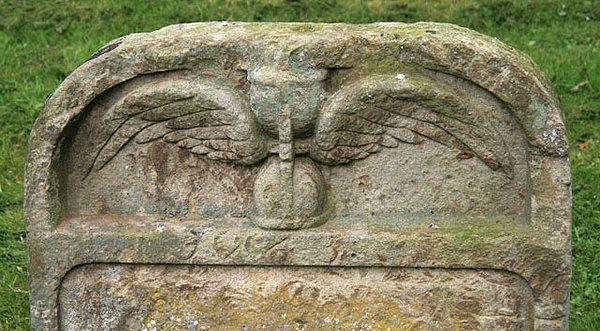
The Cemitério do Alto de São João contains many examples of these winged hourglasses, often in combination with other symbols of death, such as the scythe of Father Time, an inverted torch symbolising the extinction of the flame of life, or a skull and crossed bones.


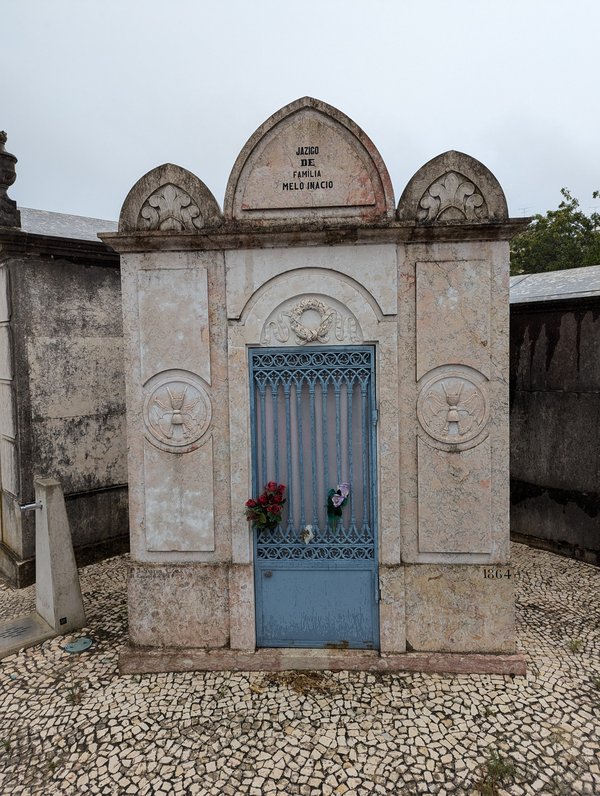


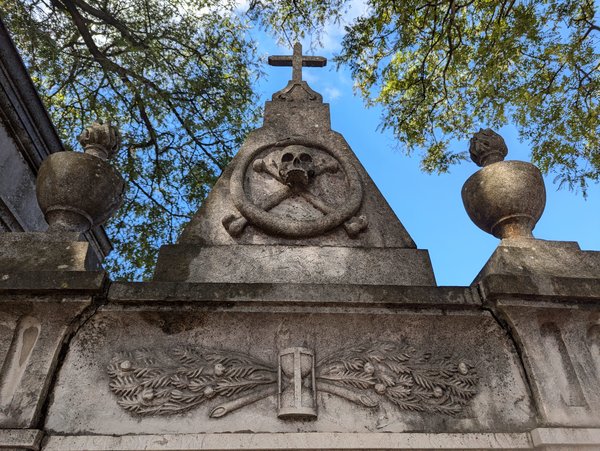
An hourglass is also depicted on a cast-iron funerary monument erected in 1832 on a Dutch cemetery, together with an oil lamp, symbol of eternal life, seen standing on a book on the right. The lamp is also shown prominently on a design drawing for this monument and there are also inverted torches on the monument, as can be seen here.
The hourglass and the lamp are mixed in with an elaborate ensemble of scientific instruments (a single-plate electrostatic generator, with a Leiden jar and a discharger in front, a telescope, and three drawing instruments), which commemorate that the deceased man had a strong interest in the natural sciences, and owned his own collection of scientific instruments.
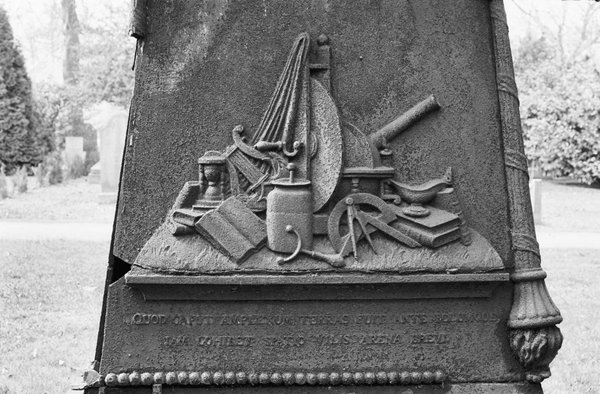
On a printed invitation to attend a funeral, dated 1712, we see three hour glasses, one of them winged. But there are also, in the bottom corners, two clocks, another reminder of the passing of time.
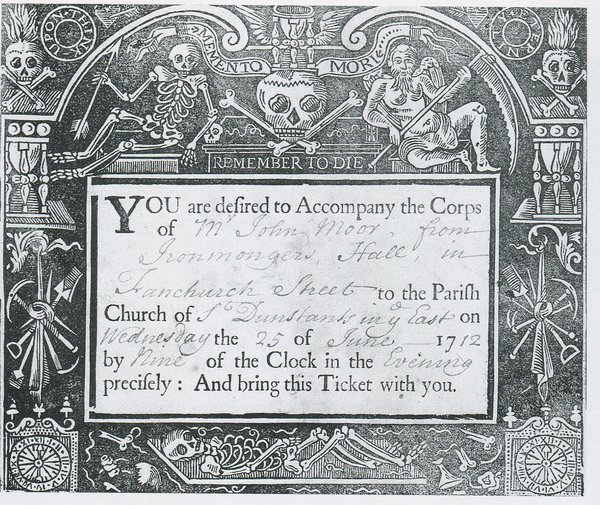
On our visits to cemeteries, we have only once found a clock depicted on a gravestone, where it was part of the instrumentation of the deceased, the German astronomer C. L. C. Rümker (1788–1862). This was also in Lisbon, in the British Cemetery, and it was shown in an earlier blog, Clocks in Lisbon.
But in the Cemitério do Alto de São João we found something we had never seen anywhere else: the depiction of a clock dial.
The hands are in the classic ‘10 past 10’ position, and the dial is accompanied with a sobering text that translates as ‘The hours go by / the days go by / the years go by / and our lives go by’.

And as if that were not clear enough, at the bottom is again the winged hourglass.
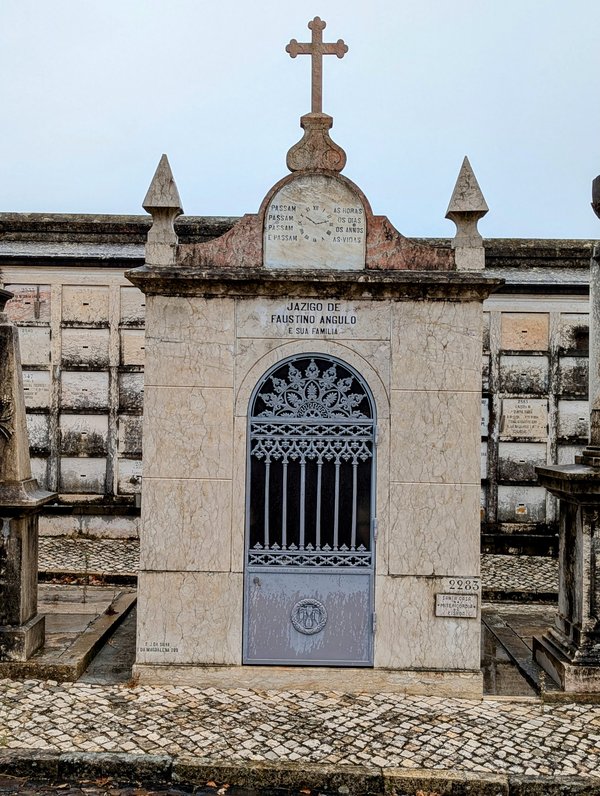
Unless otherwise stated, photos by Jade de Clercq.